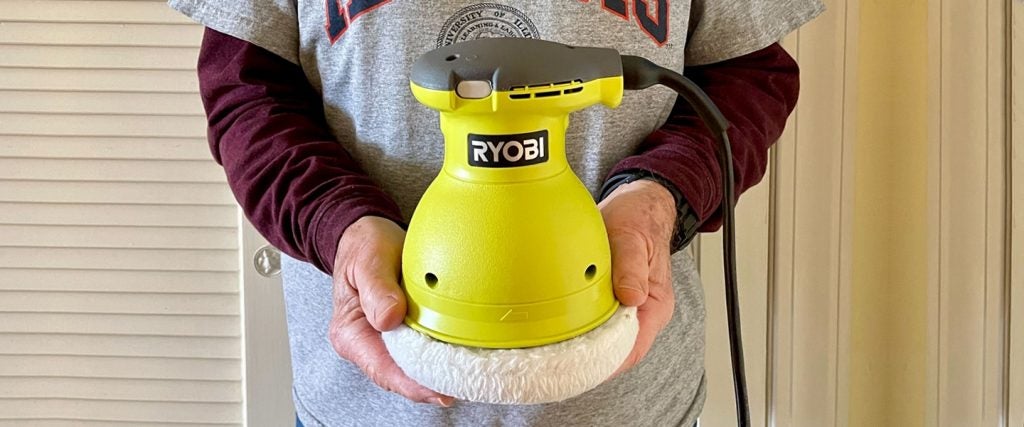After I was thrown into the air and fell flat on my back during a soccer game in college, my life changed forever. An MRI revealed I had herniated multiple discs in my back, which caused near-constant pain that would take years of physical therapy to alleviate. Despite the natural urge to find a silver lining in all of our most dismal lived experiences, it’s been hard to extract any positives from my back injury — except for one. Having the back of a 70-year-old man in my 20s and 30s ultimately brought me closer to my dad, who happens to be a 70-year-old man with a bad back.
Over the past decade, we’ve grown accustomed to swapping foam rollers, back braces, stretching routines and a bunch of chiropractor-approved snake oil. It came as no surprise, then, that upon my arrival to their house in Wisconsin, my dad wasted no time in showing off his latest back-pain-relieving gizmo — a Ryobi 6-inch handheld orbital car buffer.
“It basically massages the muscles in your back like those $150 massage guns,” he explained, beaming with pride. “But this is a car buffer, and I got it at Farm & Fleet for $35.”
The logic behind using a car buffer to massage your muscles, which my dad attributes to a “guy he met on the golf course,” isn’t far off. According to multiple studies, vibrations help reduce tightness and pain in muscles “by increasing the temperature of soft tissues and increasing blood circulation.”
Medical explanations aside, both my dad and I are well beyond the point of theoretics. The only way to truly know if something will relieve your back pain is to try it yourself. Back in Wisconsin, I laid face-down on the living room floor before an audience of my parents — such are the customary theatrics for my family trialing our latest back-pain-relieving gimmicks. Next, my wife plugged the machine into the wall, fired it up and pressed the soft-clothed spinning head of the polisher onto my lower back while moving in a circular motion similar to, let’s say, polishing the hood of a car.
As someone who’s been inching closer and closer to buying a wildly expensive “deep tissue percussive massage gun” for myself or my dad, I was delighted to find the handheld polisher felt great. The strong but subtle vibrations eased the muscles of my lower back, butt, and legs, relieving the ache that had set in after the two-hour drive from Chicago.
To be sure, there are a few pitfalls to using a handheld electric car polisher on living tissue. “You have to use it on your skin because your shirt will get twisted up,” my dad explains, “and you can’t press too hard, or use it too long because it can get a little hot.”
This is the primary reason why Alti Iftikhar, a physician in Florida who specializes in sports medicine, advises against it. “Although the car buffer may feel similar to a massage gun, the way it oscillates can cause some skin irritation and even skin burn in people with sensitive skin,” he warns.
What’s more, he adds, “The massage guns, even the cheap knock-off ones, work differently. They’d be more efficient to increase blood flow to those areas and help break down scar tissue around muscles and tendons — which, unlike the car buffer, is their primary function.”

Though a few of his golf buddies “buff their car and then buff their back” on a regular basis, my dad reports that after a few months, the car buffer lost its shine. “The first few times were great, but by the fourth or fifth time, it wasn’t helping very much,” he tells me.
Nevertheless, he’s not discouraged that the car buffer failed to cure his achy back. After all, it’s an outcome that he and I are all too familiar with. “It’ll just get thrown in the closet with the sacro-wedgy, the styrofoam rollers, that ball-massager heated thing your sister gave me, the spike pads and a bunch of other crap I can’t even remember,” he laughs. “God, there’s really been so many of them.”

